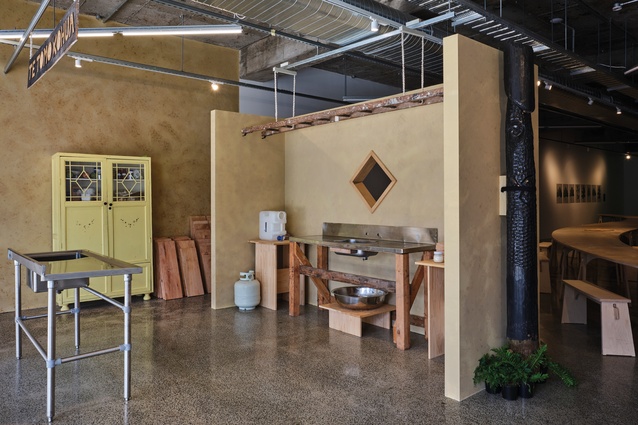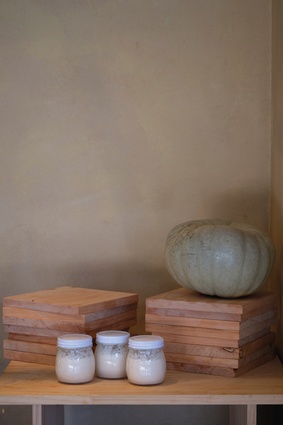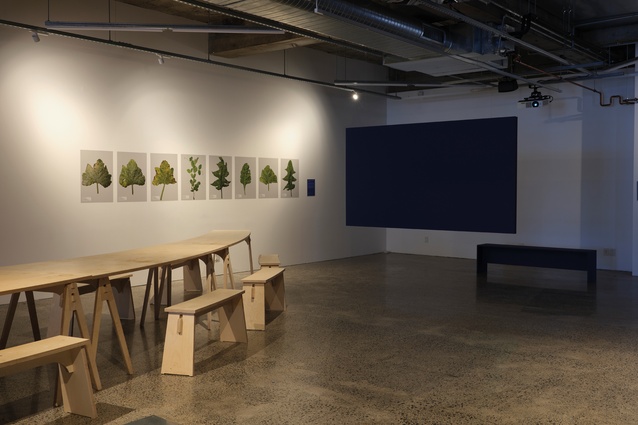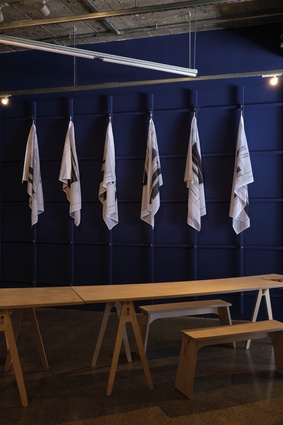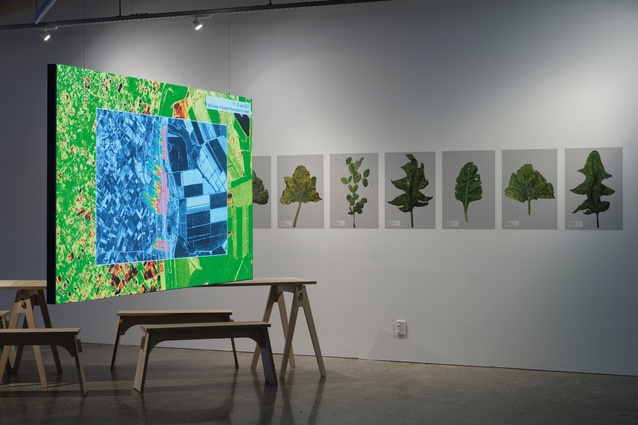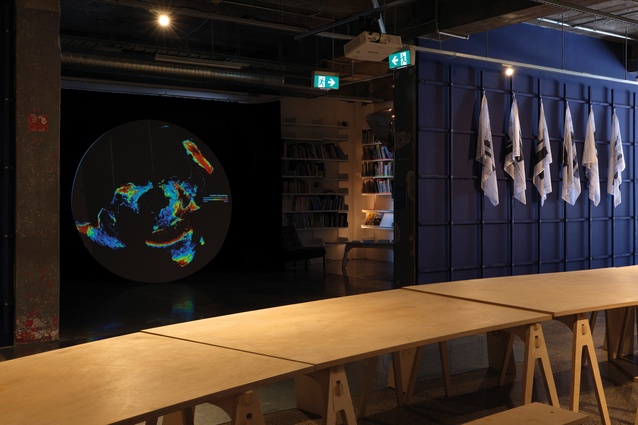Review: Slow Boil
Lana Lopesi looks at this exhibition, which ran at Artspace Aotearoa from 29 May – 07 August 2021, and she leaves feeling full.
Cooking at a slow boil requires the skilful and patient application of slow, steady heat to ingredients in such a way that they’re only just at boiling point, with a few gentle bubbles rising to the surface. Slow cooking not only enhances starchy and tougher foods and brings grains and dried food back to life but also fuses flavours, entangling disparate components. It requires two core elements – steady heat and time.
Replicating the processes of slow cooking is Slow Boil, an exhibition and public creative research project at Artspace Aotearoa, which unfolds and grows over time. The exhibition is a collaboration between Boil Up Crew, including Grayson Goffe, and the interdisciplinary Slow Boil Collective (Chiara Ficarelli, Matthew Galloway, Lachlan Kermode, Bhaveeka Madagammana, Karamia Müller and Blaine Western). Together, the two collectives seek to explore kai rituals, notions of space, sovereignty and mapping, and New Zealand’s role in Indigenous dispossession of others.
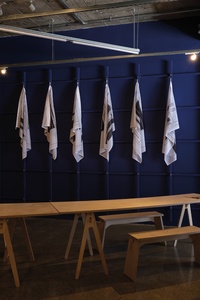
As you enter the gallery space, you are greeted by the kāuta named Te Tomo Kōhua, which, in a way, is the beating heart of the exhibition. Kāuta are the hearts of marae: key places for hospitality and the transmission of intergenerational learning that happens in the kitchen. The earth-toned and well-lit space, completely visible from the road, is a functional cookhouse, used by Boil Up Crew throughout the exhibition to feed the community of Artspace as well as of Karangahape Road. Feeding brings folks together.
The sink and pātaka kai have come into this kāuta from the Kaitiaki Village at Ihumātao, nodding to the role of sustenance required in moves of resistance, not only in terms of frontline resistance but also in the way that maintaining food traditions and all the knowledge associated with them can be a key way to resist the ongoing efforts of colonisation.
Beyond the kāuta, we move into a space painted a deep blue, with timber gridding on the walls. Around the room, a series of works – flags, satellite imagery and projections – by Slow Boil Collective titled Hot Waters is dispersed. The Hot Waters series builds over the exhibition; each week I have visited, new works are added or existing work altered, based on the workshops held the Saturday before.
The works dive into New Zealand’s reliance on phosphate rock imported from Western Sahara. Phosphate rock is a key ingredient in superphosphate fertiliser, the production of which is an industry that, as we are told, funds Morocco’s occupation of Western Sahara. The Hot Waters series builds on the issues explored in The Ground Swallows You, Part II (2017) by collective member Matthew Galloway. Galloway’s work consists of three mirror-steel sheets on poles with three official documents relating to New Zealand’s importation of phosphate rock from occupied Western Sahara.
Through the combination of their deep research, communicated visually, Slow Boil Collective and Galloway implicate Aotearoa’s role in the exportation of phosphate and, by extension, the ongoing occupation of the Indigenous Saharawi people. The impacts of state violence are further emphasised through the inclusion of works by Forensic Architecture, a multidisciplinary research group based at Goldsmiths, University of London, who research state violence through architectural techniques and technologies.
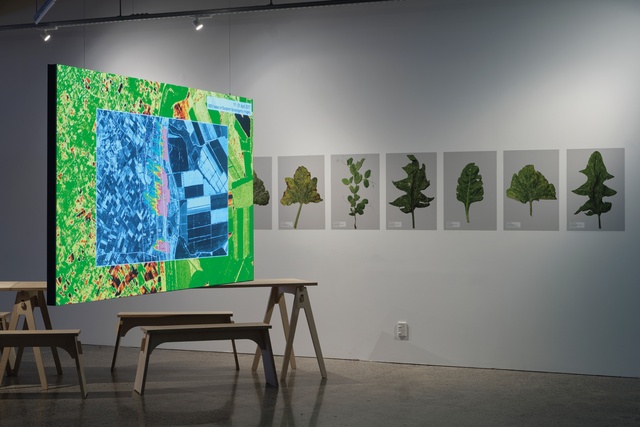
The contrast between the kāuta and the exhibition behind it, at times, feels jarring. In some ways, you wonder if the stretch is too broad but, after each visit, I become more and more convinced – for me, too, it is a slow boil, requiring ongoing thought and engagement with the works, the ideas and the research. With each visit, you see new things, and new information and ideas have time to settle in your mind. Capitalism and colonialism rely on modes of extraction.
Slow Boil highlights the role of food and vegetation in colonisation and colonial processes, pointing to the multiple modes of extraction at play right now through the extraction of phosphate in the Western Sahara, to environmental violence in Gaza, to the ongoing gentrification of Karangahape Road. Scholar Lisa Lowe contends that histories of colonisation reveal the intimacies between the four continents. Perhaps Slow Boil reminds audiences that we, the fifth continent, are also a part of this intimate web – we’re all implicated.
The Boil Up Crew feeds people with kai, and the Slow Boil Collective feeds people with research – by the time you leave the exhibition, you’re feeling pretty full. It’s a big show with a big heart and so, too, is the wero that we’re left with. For that reason, it needs to be a slow boil so that things can settle and slowly percolate.
I walk back out onto K’ Road wondering: Now that I’ve been fed, what do I do about it?

